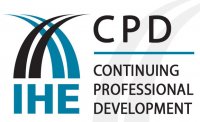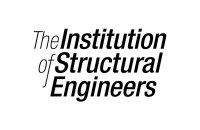This course is intended for those with building knowledge but are not familiar with specialist practices in the understanding and control of damp - whether you're a surveyor, maintenance manager and officer, estate and facilities manager or building contractor involved in the diagnosis of building faults and damp.
This one day course will help delegates understand where condensation and dampness can occur, its measurement, its effects on buildings and people, how to deal with the causes of dampness and not just the symptoms and preventing or managing dampness.
- Dampness is often misunderstood and yet it is biggest cause of decay in buildings. It is important to understands its effects, where it comes from, how it is caused and then to deal with it properly – treating the cause and not the symptoms
- Damp causes buildings to deteriorate and also affects the health of occupants. You don’t need specialists to do the diagnosis – you need appropriate knowledge and equipment
- Modern methods of retrofit, refurbishment and maintenance can cause dampness problems – find out how to avoid these pitfalls
- Use the correct treatment methods to provide a greener and more economic outcome
- Climate change is bringing about greater dampness risks with intense rainfall and flooding – this is changing the approach to dampness
Aims & Objectives:
- Where dampness can commonly occur in buildings.
- Inspections and analysis – processes and equipment.
- The limitations of different types of surveys in different circumstances and when you really need expert assistance.
- How dampness occurs – the causes and how these relate to symptoms.
- The effects of dampness on the building and the effects on the health of occupants.
- Specifying works to deal with dampness – focus on the cause and not the symptoms.
- The pitfalls of modern retrofit, refurbishment and maintenance.
- Flooding – properly drying out buildings – and what if you don’t.
- How dampness can affect sustainability and energy efficiency.
- How to prevent or manage dampness.
Course Outline:
On completion of this course, delegates should:
- List common causes of dampness.
- List common problems caused by dampness.
- List common areas of misunderstanding dampness.
- List common solutions.
- List the equipment often used to properly understand dampness.
- Outline the appropriate methods and equipment to deal with buildings which have been flooded.
- Explain what elements of repair, maintenance and facilities management are necessary to prevent and management dampness and explain the wider implications of dampness.
- Summarise why it is importance to prevent dampness to keep buildings in good condition, maintain healthy conditions for occupants and to maximise energy efficiency.
- Explain the difference between older and newer buildings and relate this to dampness and how to avoid inappropriate treatment.
- Describe different types of dampness (including condensation), how it can occur, its appearance, relevance and remediation.
- Summarise the processes of analysis.
- Explain the different levels and types of inspections and surveys, their limitations and when to undertake them.
- Debate the causes of damp and remedial actions with others.
- Produce outline specifications for remedial works.
- Provide an informed approach to the appointment of specialists and be able to scrutinize and debate causes of dampness and remedial proposals.
- How to supervise and inspect some common types of dampness remedial works.
Mode of Delivery:
This will be a combination of presentation, individual and/or group exercises, discussion, open workshop activity and feedback
Benefits of Attending:
Delegates will learn that dampness should not be seen as a specialist area but a fundamental responsibility for all those that deal with buildings. This course should help delegates properly understand and tackle dampness issues with the seriousness they deserve and refrain from automatically seeking advice from remediation contractors before proper analysis has taken place. Overall, this should enable better building management and maintenance along with a more cost effective and greener approach.








